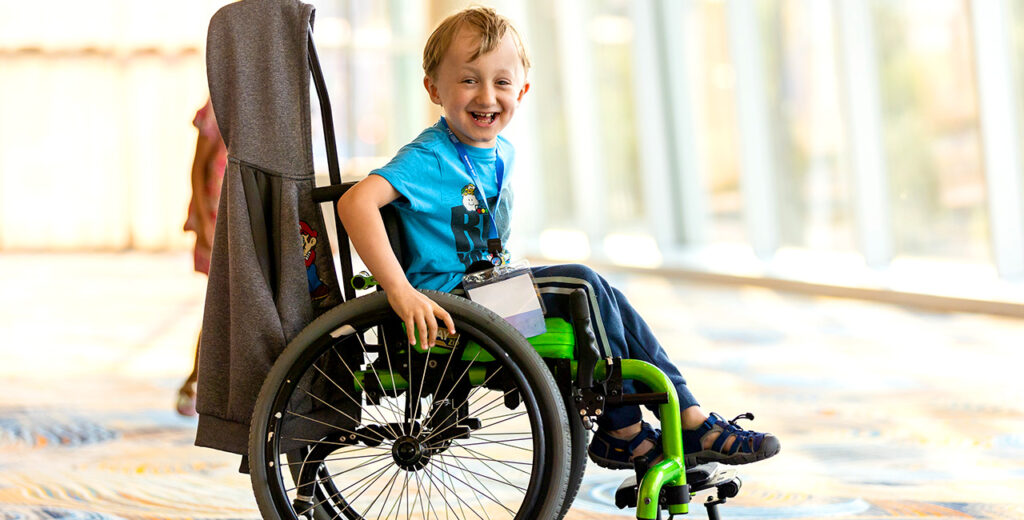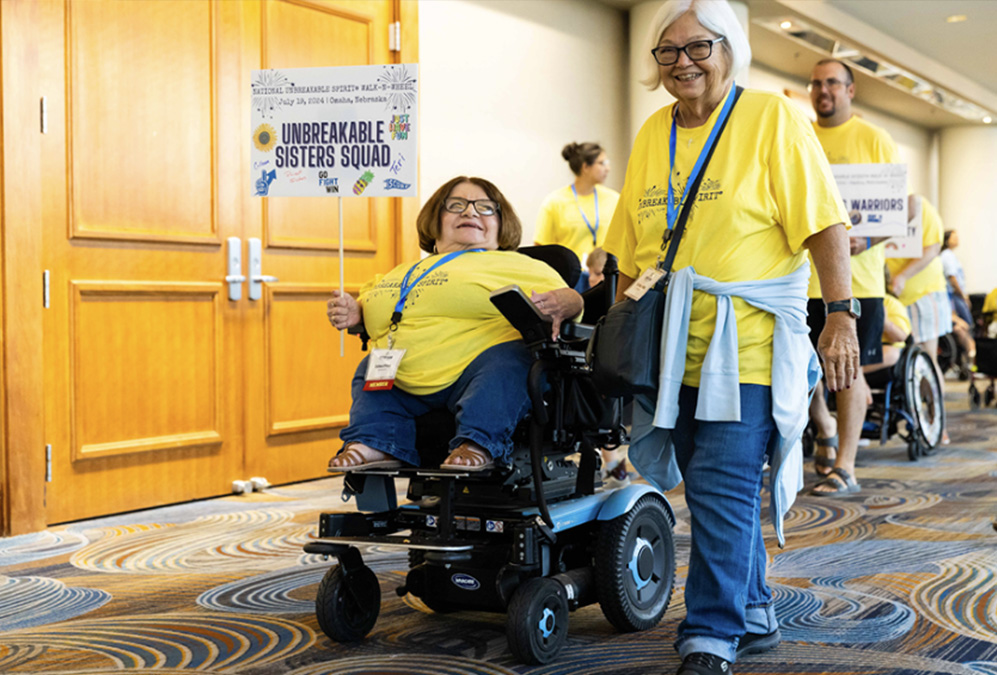Information for Pediatric Health

SHARE
Information for Pediatric Health
Caring for children with OI needs to meet the needs of each child. No two children with OI are exactly alike. The development of a care plan helps to ensure your child’s needs are being met. Elements of a care plan for a child with OI may include:
- Management of both skeletal and non-skeletal issues
- Rehabilitation to enhance function and encourage development of maximum bone mass
- Monitoring of growth and nutrition
- Surgical/hospital care that reflects knowledge of OI and respect for bone and tissue fragility
- Referrals to other specialists as needed, such as physical therapy
- Attention to normal childhood disease and immunizations
Precautions to take when caring for a person with OI
There are certain precautions that should be taken when working with someone with OI. These include:
- Make sure that medical professionals are gentle and cautious during transfers; they should avoid sudden pulling of the limbs, neck, or spine. Limbs should never be twisted, bent, or straightened. As parents, you will be able to provide guidance on how to best move your child
- People with OI can bruise easily. IVs and blood draws should be done by the most experienced professional available
- Blood pressure cuffs or tourniquets can lead to bruising or fracture if placed too tightly. In addition, automatic blood pressure cuffs may put too much pressure on the arm bone. A baseline blood pressure should be taken by manual blood pressure measurements
- Medical professionals may not take the blood pressure of your child if it is not indicated, to avoid risk of fracture
- Ask for neonatal or pediatric nursing staff to help with medical procedures
- Doses of medicines should be determined by body weight, not the age of the child with OI
- Stretchers should be padded and without holes that a small person could slip through. Be careful when tightening straps on a stretcher to avoid causing a fracture Ask to stay with your child at all times; your presence not only provides comfort to your child, but you may be able to help with transferring or ensuring safety precautions are used to prevent further injury Don’t be afraid to speak up about your opinions, wishes, advice, or instructions; you know your child best and your input can often help doctors Fractures can be unpredictable in people with OI 18
- Make sure that blankets and sheets are not too tight and be careful when removing them to avoid getting fingers, toes, etc., caught in the folds, which could cause a fracture
- Some people with OI develop hyperthermia under general anesthesia, and some are sensitive to inhaled anesthetics
- Make sure to communicate any allergies; some people with OI have an allergy to latex
- It may be helpful to bring a copy of the Handle Me with Care flyer from the OI Foundation
Interdisciplinary Care
Children benefit from coordinated interdisciplinary care from physicians familiar with OI. A number of medical centers across the United States and Canada have OI clinics and/or research programs, often as part of a genetics or bone dysplasia center. The OI Foundation can assist in helping you find a clinic through our “clinic directory.”
In other communities, the parents and primary care physician work together to create a network of health care providers for the child with OI. Clear and timely communication between all health care providers is important.
Monitoring
As your child grows, the following should be monitored regularly:
- Screen routinely for vision, hearing, and dental care
- Check the spine for scoliosis and kyphosis, an excessive outward curving or hunching of the spine
- Test bone density to help monitor changes over time (a baseline test when a new course of treatment is started, and then another test approximately 6-12 months after a change in treatment)
- Conduct an echocardiogram in childhood, then the late teen years, and as a young adult
- Consult with an orthodontist to assess jaw development
- Perform a baseline pulmonary function test on all children with OI and again at maturity (age 20-25); repeat every two years if the test is normal
Your doctor will be able to work with you to determine when your child should have certain screenings done.
Diet and Nutrition
As with all children, it is important that children with OI have a balanced diet containing enough water, fiber, calcium, and vitamin D for their age and size. As your child grows, the following things are important to keep in mind:
- Slow weight gain in an infant may not be failure to thrive
- Nutrition counseling for the family may be beneficial
- A child with swallowing difficulties may need a referral to an occupational or speech therapist as well as a nutritionist who treats feeding disorders
- A small appetite may be seen in children with OI of all ages; this could be caused by slower growth, inactivity, pain, medications, and depression
- Constipation is seen in children of all ages and with all types of OI (and can be recurrent); short stature, inactivity, pelvic deformity, and difficulty with hydration are contributing factors
- Weight control is important; obesity places a strain on the fragile skeleton and can lead to loss of mobility
Mental Health
Living with a lifelong health condition like OI can be stressful at times. But many people with OI and their families cope well with both the physical and the social/emotional problems associated with OI to lead happy, interesting, and successful lives. Being aware of trouble areas can help people be better prepared and avoid or minimize some potential problems. By putting support systems in place, additional help will be available when you need it. Some helpful strategies include:
- Being well informed about OI
- Developing an effective support network
- Resolving the social and emotional needs of the person with OI and their family members as they arise
- Including interesting and fun activities in your schedule
We also recognize that mental health needs are different for every member of your family. Your needs as a parent may be different than the needs of grandparents and even siblings.
Development and Growth
It is important to track growth and development in all children. There are some specific considerations for children with OI when it comes to development:
- OI does not affect a child’s ability to think and learn, but children with OI can demonstrate delays in meeting developmental milestones
- Delays can be the result of repeated immobilizations after fractures; physical and occupational therapy, braces, and use of adaptive equipment and mobility aides can assist in meeting developmental milestones
- Mild to significant short stature and a slow growth rate occurs in OI
- Hip and back pain should be evaluated by an orthopedist and/or a gait specialist
References
Glorieux F. (2007) Guide to Osteogenesis Imperfecta for Pediatricians and Family Practice Physicians. Osteogenesis Imperfecta Foundation. Gaithersburg, MD.
Attribution
Thank you to Dr. Francis Glorieux, Canadian Shriners Hospital for Children and McGill University in Montreal, Quebec, for reviewing this information. April 2015.
Related OIF Videos and Podcast Episodes
Physical and Occupational Therapeutic Strategies for Children with OI
Multidisciplinary Care for the Pediatric Patient with OI
Surgical Updates on Treating Children with OI
Measuring Efficacy of Physical Rehabilitation in Children and Adults
Transitioning; Taking Charge of your Health as a Young Adult
Helping our community stay up to date and connected.
Please sign up to receive updates from the OI Foundation including our monthly e-Newsletter, research updates, and upcoming event information.

